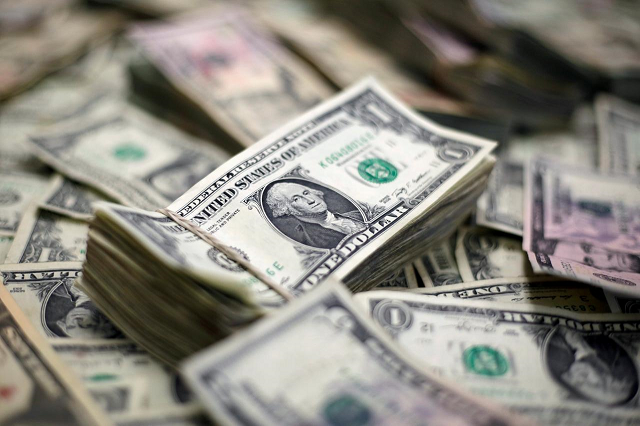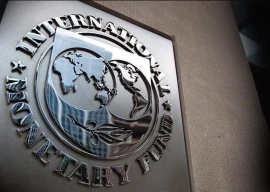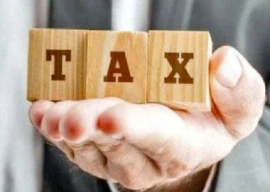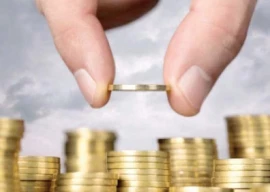
The $2 billion loan will be categorised as an “official bilateral inflow”, said sources in the Ministry of Finance and the State Bank of Pakistan (SBP). They said that over $1 billion has already been transferred to the SBP accounts this week, and would reflect in the reserves’ data to be released on August 2. The amount will push SBP-held foreign currency reserves past $10 billion.
Pakistan receives less than projected loans from World Bank
Earlier this week, the SBP reported that official foreign currency reserves had fallen to $9 billion for the period ending July 20.
SBP chief spokesperson Abid Qamar did not respond to the question of whether Pakistan had already received $1 billion of the $2 billion official bilateral inflow.
The Ministry of Finance also did not officially comment on the development. But a senior official confirmed on condition of anonymity that one friendly country has agreed to provide $2 billion as an official bilateral inflow. He said that it will be a concessional deposit.
The $2 billion loan is likely to ease pressure on official foreign currency reserves and the rupee-dollar parity. The rupee strengthened by 64 paisas against the US dollar in the inter-bank market, closing at Rs127.86 on Friday.
Consensus reached to build 2 dams with money recovered from loan defaulters: CJP
The financial assistance would also provide room to the Pakistan Tehreek-e-Insaf government-to-be in analysing the precise situation of the external sector and formalise its strategy to deal with the crisis. The deposit will also make sure Pakistan’s official foreign currency reserves are sufficient for two months of imports. The monthly bill currently ranges between $5.6 billion and $5.8 billion.
Improved reserves may also strengthen Pakistan’s position at the time of talks with the International Monetary Fund (IMF) in case the government formally decides to avail the programme.
Asad Umar, the man tipped to lead the finance ministry, told The Express Tribune that the economic crisis was so severe and required measures so urgent that no option, including the IMF programme, could be ruled out.
However, the $2 billion assistance will not be enough and the country will have to put its house in order by enhancing exports and attracting sufficient foreign direct investment.
Another $1 billion loan makes its way from China
The military establishment has already declared the economy as a matter of national security. In a recent meeting of the National Security Council, apprehension was raised that any future arrangement with the IMF could undermine the China-Pakistan Economic Corridor.
In the past, the IMF expressed concerns over the sheer size of CPEC and its implications on Pakistan’s external debt repayments. Pakistan currently owes $4.8 billion to the IMF that exposes it to the lender’s scrutiny.
In 2014, during the Pakistan Muslim League-Nawaz (PML-N) government, Pakistan received a $1.5 billion grant from Saudi Arabia. The previous government also requested both China and Saudi Arabia to provide $2 billion each to stabilise official foreign currency reserves. While Chinese financial institutions provided commercial loans, both countries declined to extend a bailout.
Pakistan faces a mammoth task of arranging around $11 billion to fill its external financing gap in the ongoing fiscal year. The Ministry of Finance, IMF and independent economists have assessed Pakistan’s gross external financing needs for 2018-19 to fall in the range of $23 billion to $28 billion.
Pakistan’s biggest challenge is to contain the import bill that has surged to $60.9 billion in fiscal year 2017-18.
Possible strategy in future
On the other hand, the Ministry of Finance, the Federal Board of Revenue, the SBP and the Ministry of Commerce have proposed new tax measures to curb imports after undertaking a joint exercise. Before the elections, the finance ministry moved a summary to the caretaker federal cabinet but the matter was deferred and left to the new government.
The exercise proposed to further increase the 2% customs duty to 3% on more than 6,000 imported items except petroleum products, according to the official summary. It also recommended to double the regulatory duty on mobile phones, from Rs250 per set to Rs500, and on CKD kits of mobile phones from Rs175 per kit to Rs350.
“The combined effect of these two measures will result in reduction in imports of $920 million in fiscal year 2018-19,” according to the central bank’s assessment.
In addition to reducing the import bill by about 1.6%, these tax measures will also generate Rs30 billion in revenue for the FBR, according to the official summary.
It is expected that the summary would be presented to the next government.

1725967717-0/Untitled-design-(3)1725967717-0-165x106.webp)

1725275251-0/Untitled-design-(3)1725275251-0-165x106.webp)













COMMENTS (4)
Comments are moderated and generally will be posted if they are on-topic and not abusive.
For more information, please see our Comments FAQ